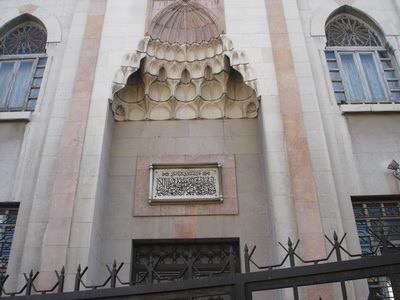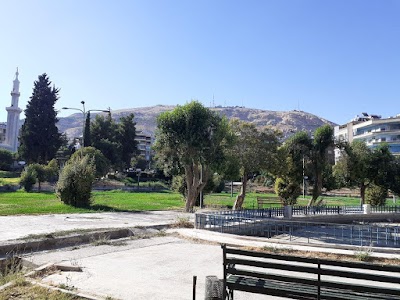Al-Mansour Mosque (مسجد المنصور)
Related Places
Overview
Overview of Al-Mansour Mosque
Al-Mansour Mosque, located in the Sirte District of Libya, stands as one of the region's most distinguished landmarks. This remarkable structure serves not only as a place of worship but also as a significant emblem of Libya's rich cultural and architectural heritage. Set against the tranquil backdrop of Sirte's expansive landscape, the mosque offers a profound insight into the spiritual and communal life of the local population.
Historical Significance
The history of Al-Mansour Mosque is intricately linked to Libya's past. Commissioned by Muammar Gaddafi, the revolutionary leader, in the latter half of the 20th century, the mosque was part of an ambitious city planning initiative aimed at transforming Sirte—Gaddafi's birthplace—into a prominent urban center. Although Gaddafi's political legacy is marked by turbulence, the mosque remains a cherished institution among locals, valued for its religious and communal significance.
Architectural Marvel
Architecturally, Al-Mansour Mosque is a stunning example of Islamic grandeur. It beautifully merges traditional design elements with modern aesthetics, featuring towering minarets and grand domes adorned with intricate geometric patterns and calligraphy that capture the essence of Islamic art. Inside, expansive prayer halls supported by magnificent arches and lavish chandeliers create a captivating atmosphere, while the carefully engineered acoustics enhance the spiritual experience for worshippers.
Community Hub
Al-Mansour Mosque holds a special place in the hearts of the people of Sirte. It serves not just as a venue for daily prayers but also as a vibrant center for community activities, especially during significant Islamic festivals like Ramadan and Eid. During these occasions, the mosque becomes a hub of vibrant gatherings, communal prayers, and social events, reflecting the unity and collective spirit of the local Muslim community.
Educational Role
An interesting aspect of Al-Mansour Mosque is its commitment to education and the propagation of Islamic knowledge. The mosque houses an extensive library filled with a rich collection of Islamic texts and literature, making it an essential resource for religious scholars and students alike. Regular educational programs and lectures are conducted here, fostering a deeper understanding of Islamic teachings and traditions.
A Cultural Experience for Tourists
For foreign tourists, visiting Al-Mansour Mosque offers more than just a glimpse of an architectural marvel; it provides a unique opportunity to immerse oneself in Libya's rich cultural tapestry. Visitors can observe the practices and traditions that have been preserved and celebrated through generations, while the mosque stands as a testament to the resilience and faith of the local community amidst various challenges Libya has faced over the years.
Serene Surroundings
The serene courtyard, with lush green gardens surrounding the mosque, offers a peaceful retreat, inviting visitors to pause and reflect. The well-maintained pathways and thoughtful landscaping enhance the spiritual tranquility experienced by visitors. For photographers and history enthusiasts, the mosque provides countless picturesque views and a chance to explore the meaningful stories encapsulated within its walls.
Respecting Cultural Norms
It is essential for tourists to be mindful of cultural and religious norms when visiting Al-Mansour Mosque. Modest attire is recommended, and visitors should observe prayer times to ensure their presence does not disrupt worshippers' routines. Understanding and respecting these customs will enrich the experience and foster a deeper appreciation for the cultural significance of this sacred site.
Conclusion
In conclusion, Al-Mansour Mosque is not merely a monument of religious devotion; it is a beacon of community strength and cultural heritage in Sirte, Libya. Its towering minarets and domes tell silent stories of faith, resilience, and the timeless beauty of Islamic architecture. A visit to this remarkable mosque is both an educational journey and a spiritual experience, making it a valuable addition to any Libyan travel itinerary.




